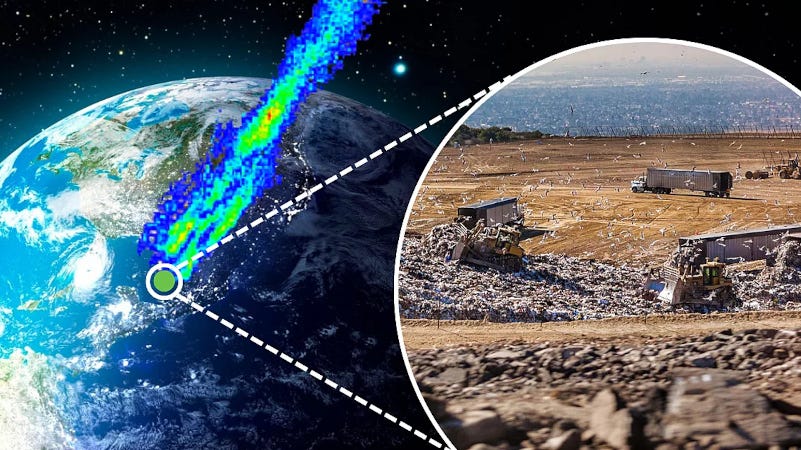New Research Sheds Light on Waste Emission Sources & Trends
‘Nature’ Draws on GHGSat Methane Data for the Report
New data from GHGSat’s satellite constellation, published in a peer-reviewed Nature paper by authors from GHGSat, the SRON Netherlands Institute for Space Research, and Harvard University, reveals trends in waste emissions sources, supporting landfill operators with insights to more effectively address methane and design gas capture systems.
“The insights from this new research deepen a global understanding of landfill methane.”
Stephane Germain, GHGSat
Researchers found that traditional methods of estimating emissions yielded notably different results from actual satellite measurements, indicating significant gaps in the global understanding of landfill methane. Drawing on close to 1,500 observations from 151 waste disposal sites in 47 countries, the study showed that emissions estimates had little correlation with the ground truth of direct measurement. Measured emissions were both significantly smaller and larger than what estimates would indicate. The findings point to the need to integrate measurement tools into emissions models to generate a more accurate understanding of emissions.
GHGSat’s satellite data also highlighted a link between landfill surface activity and new emissions, as the high-resolution observations were able to pinpoint the origins of emissions. For example, in a landfill near Casablanca, the emission sources showed a clear migration of emissions as new sections of the landfill were developed. This insight can be used to effectively design landfill gas capture programs.
The scale of the study enabled comparison of emissions across different types of landfills. Researchers classified the 151 waste disposal sites in the study into two categories: managed landfills, which have organized structures to bury waste, and dumping sites, where waste distribution is more informal. Results showed that methane emissions per square kilometer from managed landfills were lower than those of dumping sites.
“The insights from this new research deepen a global understanding of landfill methane,” said Stephane Germain, CEO of GHGSat. “With the size of GHGSat’s satellite constellation, we are able to collect data at the scale needed to provide valuable analysis for operators, supporting them to understand and address landfill methane and design impactful, profitable gas capture systems that transform methane from waste into an energy resource.”
In 2016, GHGSat launched the world’s first satellite capable of tracing the source of methane emissions directly to industrial facilities. Designed to support carbon-intensive industries to address emissions, GHGSat’s satellites pinpoint the source of methane leaks as small as 100 kg/hr to a 25-meter area. Uniquely capable of monitoring industrial sites at a daily cadence, GHGSat alerts operators about emissions within hours of detection. To date, GHGSat has launched 14 satellites, which track emissions from millions of facilities annually to provide the most robust global coverage of methane emissions in the field. Alongside its fleet of satellites, GHGSat operates aircraft equipped with its patented sensors, complementing satellite monitoring with targeted and rapid response campaigns.
For the waste sector, mitigating methane emissions represents an opportunity to benefit the environment while also generating additional revenue through landfill gas capture projects. Captured methane from the decomposing waste in landfills can be converted into biogas or renewable energy gas, which can then be sold as fuel or used onsite for power generation. This creates new revenue streams for landfill operators and reduces energy costs, aligning with a circular economy approach that turns waste into a resource. Working as a trusted partner to industry operators, GHGSat has supported carbon-intensive industries to mitigate more than 20 MTCO₂e of methane since beginning operations, equivalent to the annual emissions from 4.6 million cars.
GHGSat also collaborates in the SRON-led TWOS project, funded by the Global Methane Hub, to work with local partners in the global south to use the observations to support the mitigation of emissions.



